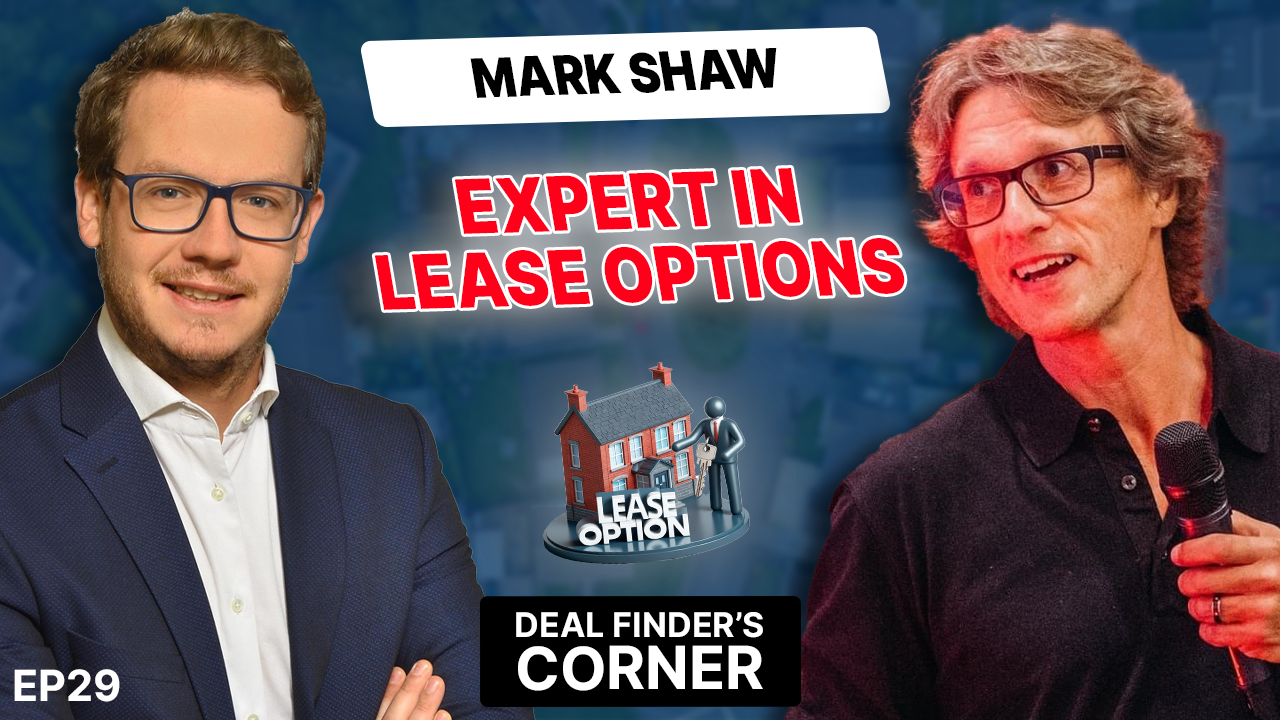Stuart Scott, celebrated as the 2019 UK Property Developer of the Year and 2018 Property Investor of the Year, leads the co-living movement as the author of the bestselling book “The Co-Living Revolution.” In this edition of Deal Finders Corner hosted by Guillaume Black, CEO of Property Filter, Stuart shares expert advice on converting properties into highly profitable co-living HMOs (Houses of Multiple Occupation). He discusses market opportunities, strategies for maximising returns, and the necessity of high-quality features to meet tenant expectations, while emphasising the importance of fostering a community to enhance the rental experience.

“Don’t deliver a vanilla one in the middle of the market right now, (…) you’ve got to add significant value to the projects you do.”
Why Invest in Co-Living HMOs?
Stuart Scott explains that co-living HMOs “should be on your radar” as they offer rapid financial gains with substantial margins, making them highly attractive to banks and investors moving away from the low-margin buy-to-let market. “For replacing your income, buy-to-lets would take a long time”, whereas “co-living HMOs have a high margin… and the banks have got the appetite to lend on them,” says Stuart. This efficient model allows investors to replace their income with fewer properties, speeding up the return on investment and reducing the property count needed for significant cash flow.
Understanding Tenant Preferences: Insights from the Paragon Report
Stuart Scott discusses the insights from the Paragon Report, which reveals current tenant preferences in Houses of Multiple Occupation (HMOs). This report underscores a shift towards more sophisticated and personalised living standards in HMOs, and the increasing tenant demand for both privacy and communal living enhancements.
Key findings include:
- En-suite Bathrooms: Highly valued for privacy and convenience.
- Quality Furnishings: Tenants seek well-furnished living spaces.
- Larger Bedrooms: Preferred for their comfort and spaciousness.
- High-Speed Internet: Essential for connectivity.
- Workspace in the Building: 35% of tenants desire integrated workspaces, showing a preference for flexible living conditions.
Stuart notes that addressing these preferences can significantly enhance property desirability but reassures that these features do not mean building dedicated co-working spaces.
The Benefits of Co-Living HMOs
The co-living model not only enhances investment potential but also fosters community, increases tenant satisfaction, and elevates property desirability. “Don’t deliver a vanilla one in the middle of the market right now,” warns Stuart, advocating for standout properties that captivate and retain tenants. Additionally, a notable 48% of landlords report rising demand for high-end HMOs, confirming the market’s growth towards quality shared living spaces.
Overcoming Market Challenges and Standing Out
In today’s competitive market, Stuart stresses the importance of adding significant value to each project to ensure profitability. “You’ve got to add significant value to the projects you do,” he states, emphasising the need for strategic enhancements. To stand out, delivering high-quality properties is crucial. “To outperform the competition… deliver a high-quality product to the market,” advises Stuart. This approach is critical in a market filled with options, ensuring properties meet the high expectations of modern tenants.
Always Add Value
Stuart strongly advocates for maximising the potential of each property by adding value through strategic enhancements and innovative design. Here are several strategies Stuart recommends:
1. Remedial Work: Target properties that need significant updates to unlock hidden value.
2. Optimising and Maximising Space: Use smart design to enhance property utility without extensive construction.
3. Change of Use: Convert properties to more profitable classifications to increase valuation.
4. Size and Scale Adjustments: Consider property extensions or conversions to improve marketability.
5. Securing Planning Permission: Essential for legal enhancements that increase property value.
6. High-End Finish: Necessary to attract tenants and justify higher rents.
The 2024 Buyer’s Market: A Time to Act
Stuart sees 2024 as an optimal time for property investments due to the current buyer’s market characterised by uncertainty and high interest rates, describing this phase as a “peak pain point”. He advises acting swiftly before the market rebounds in 2025, to capitalise on the high-yield opportunities available during this transient period.
Mitigating Risk in Property Investment
Stuart Scott identifies effective and essential risk management strategies for sustaining profitability and stability in property investments:
- High Demand: Ensure properties meet high-quality standards to maintain tenant interest.
- Achieving Higher Rents: Position properties in the premium market segment to safeguard revenue.
- Driving High Occupancy: Design properties that are highly desirable and promote longer tenant stays to minimise vacancies.
Leveraging Technology with Property Filter
Utilising advanced tools such as Property Filter can significantly enhance your ability to identify and capitalise on investment opportunities that others might overlook. Here’s how to leverage this technology effectively:
• Maximising Space and Expansion Opportunities: Focus your search on properties with extensive square meterage to maximise the existing space. Use Property Filter to explore different property types and geographic areas, pinpointing those with potential for expansion. For a more detailed view, integrate Google Maps to examine the property in 3D, assessing possibilities for extending the footprint.
• Analytical Tools: Property Filter includes analytical tools that help investors evaluate the potential of specific areas, including financial viability and market demand. These tools are crucial for making informed decisions that align with your investment strategy.
• Article 4 Areas and Existing HMOs: The software provides detailed mappings of Article 4 areas, which are crucial for understanding planning constraints and opportunities. Scott emphasises the value of existing HMOs, which can often present opportunities for substantial improvements. Property Filter’s robust database allows you to identify these properties easily, ensuring you don’t miss out on potential investments.
For further insights, from leveraging high interest rates to a deeper dive into the political context for this investment strategy, watch Stuart’s full presentation. Additionally, explore his educational courses at The Co-Living Revolution to enhance your knowledge and success in property investment.






